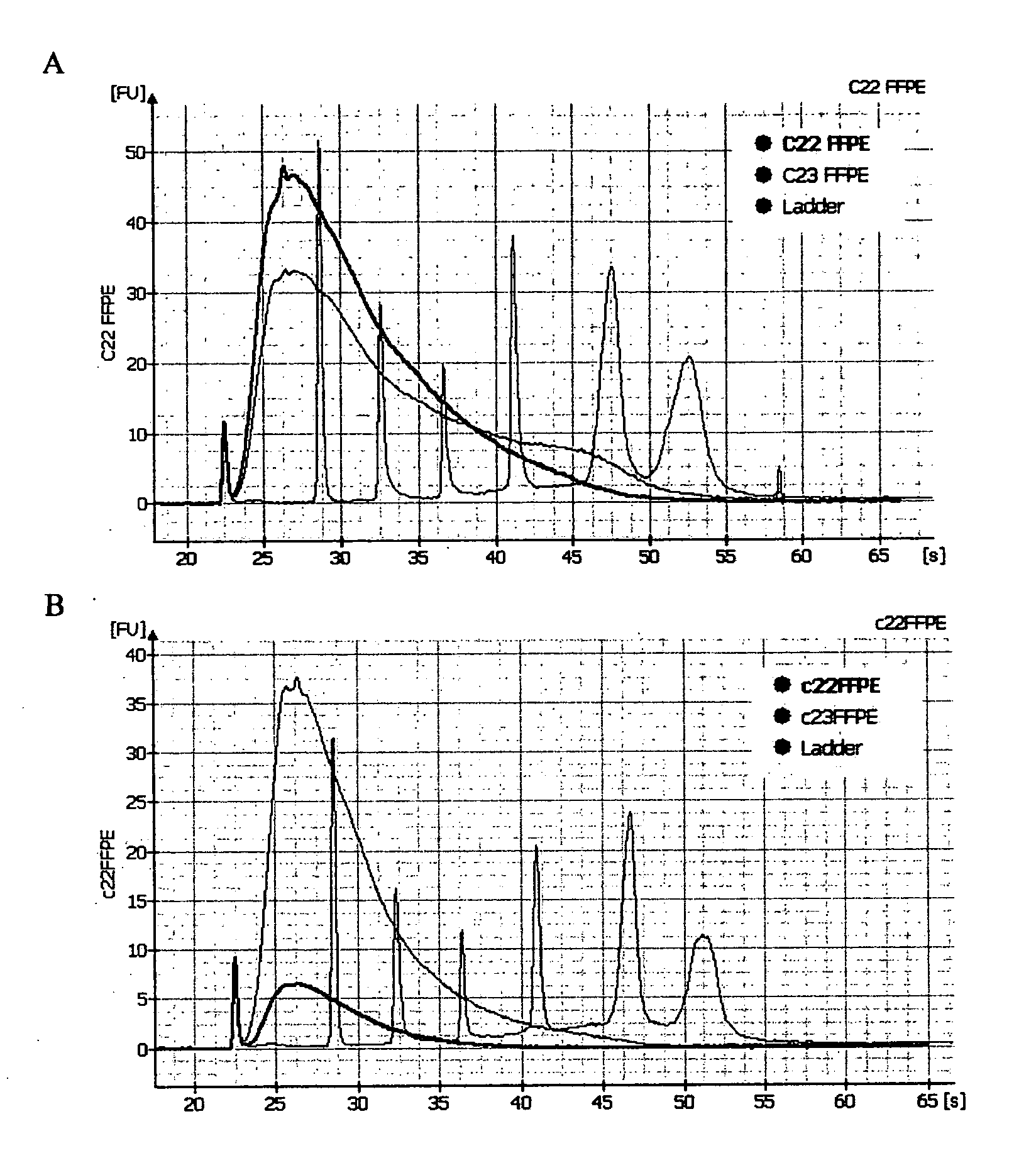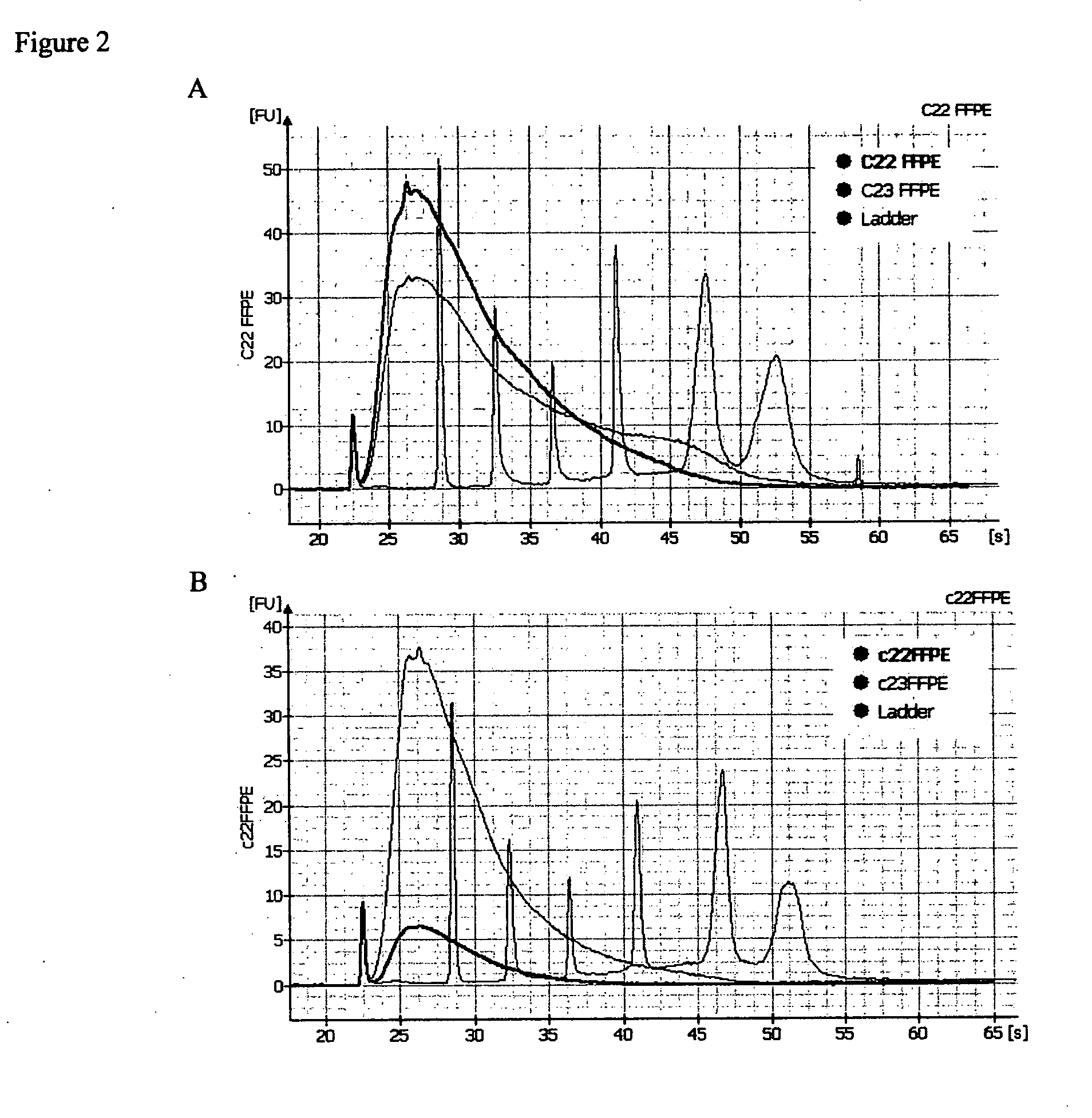Methods for diagnosing pancreatic cancer
a pancreatic cancer and cancer technology, applied in the field of pancreatic cancer diagnosis, can solve the problems of difficult to distinguish pancreatic cancer from benign pancreatic diseases, difficult to cure, and difficult to cur
- Summary
- Abstract
- Description
- Claims
- Application Information
AI Technical Summary
Benefits of technology
Problems solved by technology
Method used
Image
Examples
example 1
Materials and Methods
Pancreatic Cancer Markers Gene Discovery.
[0056]RNA was isolated from pancreatic tumor, normal pancreatic, lung, colon, breast and ovarian tissues using Trizol. The RNA was then used to generate amplified, labeled RNA (Lipshutz et al. (1999)) which was then hybridized onto Affymetrix U133A arrays. The data were then analyzed in two ways.
[0057]In the first method, this dataset was filtered to retain only those genes with at least two present calls across the entire dataset. This filtering left 14,547 genes. 2,736 genes were determined to be overexpressed in pancreatic cancer versus normal pancreas with a p value of less than 0.05. Forty five genes of the 2,736 were also overexpressed by at least two-fold compared to the maximum intensity found from lung and colon tissues. Finally, six probe sets were found which were overexpressed by at least two-fold compared to the maximum intensity found from lung, colon, breast, and ovarian tissues.
[0058]In the second method, ...
example 2
[0076]Pancreatic ductal adenocarcinoma develops from ductal epithelial cells that comprise only a small percentage of all pancreatic cells (with acinar and islet cells comprising the majority) in the normal pancreas. Furthermore, pancreatic adenocarcinoma tissues contain a significant amount of adjacent normal tissue. Prasad et al. (2005); and Ishikawa et al. (2005). Because of this the candidate pancreas Markers were enriched for genes elevated in pancreas adenocarcinoma relative to normal pancreas cells. The first query method returned six probe sets: coagulation factor V (F5), a hypothetical protein FLJ22041 similar to FK506 binding proteins (FKBP10), beta 6 integrin (ITGB6), transglutaminase 2 (TGM2), heterogeneous nuclear ribonucleoprotein A0 (HNRP0), and BAX delta (BAX). The second query method (see Materials and Methods section for details) returned eight probe sets: F5, TGM2, paired-like homeodomain transcription factor 1 (PITX1), trio isoform mRNA (TRIO), mRNA for p73H (p73...
example 3
[0093]In this study classifier using gene marker portfolios were built by choosing from MVO and using this classifier to predict tissue origin and cancer status for five major cancer types including breast, colon, lung, ovarian and prostate. Three hundred and seventy eight primary cancer, 23 benign proliferative epithelial lesions and 103 normal snap-frozen human tissue specimens were analyzed by using Affymetrix human U133A GeneChip. Leukocyte samples were also analyzed in order to subtract gene expression potentially masked by co-expression in leukocyte background cells. A novel MVO-based bioinformatics method was developed to select gene marker portfolios for tissue of origin and cancer status. The data demonstrated that a panel of 26 genes could be used as a classifier to accurately predict the tissue of origin and cancer status among the 5 cancer types. Thus a multi-cancer classification method is obtainable by determining gene expression profiles of a reasonably small number o...
PUM
| Property | Measurement | Unit |
|---|---|---|
| size | aaaaa | aaaaa |
| size | aaaaa | aaaaa |
| size | aaaaa | aaaaa |
Abstract
Description
Claims
Application Information
 Login to View More
Login to View More - R&D
- Intellectual Property
- Life Sciences
- Materials
- Tech Scout
- Unparalleled Data Quality
- Higher Quality Content
- 60% Fewer Hallucinations
Browse by: Latest US Patents, China's latest patents, Technical Efficacy Thesaurus, Application Domain, Technology Topic, Popular Technical Reports.
© 2025 PatSnap. All rights reserved.Legal|Privacy policy|Modern Slavery Act Transparency Statement|Sitemap|About US| Contact US: help@patsnap.com



